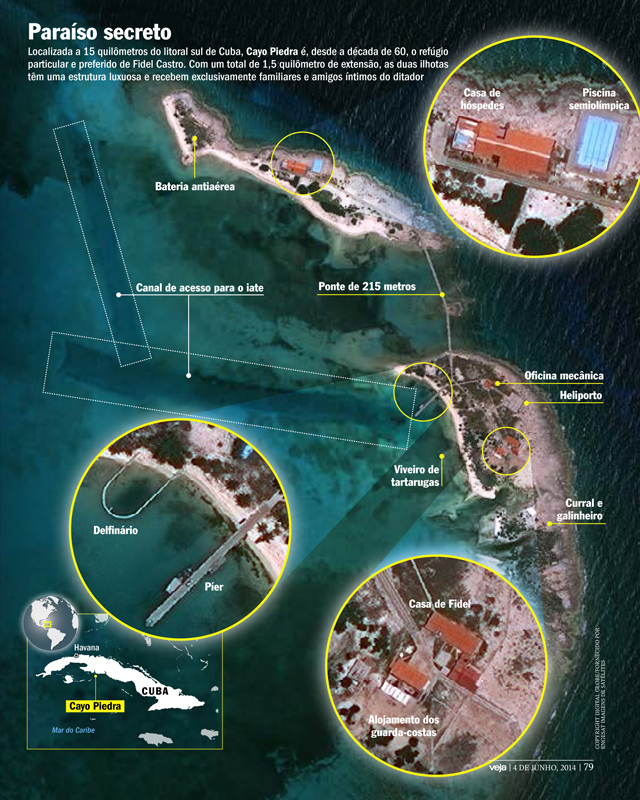MIAMI, United States. – After the invasion of the Bay of Pigs, in 1961, Fidel Castro discovered Cayo Piedra, two small adjacent islands with beaches and an almost virgin marine environment, ideal for diving and underwater fishing, as confirmed to CubaNet the researcher Luis Domínguez.
“Just after the Bay of Pigs invasion, Fidel Castro gives a tour and, through the lighthouse keepers of the area, discovers this island,” he says.
According to various press reports, Cayo Piedra (the north and south islands) is one and a half kilometers long in total, and is located about 15 kilometers from the Bay of Pigs, on the south coast of Matanzas.
Domínguez also specifies that it was Osmany Cienfuegos, the brother of Camilo Cienfuegos, who was in charge of the construction of the Cayo Piedra facilities in the mid-1970s.

According to the investigator, the workers traveled by helicopter. They built at least two houses and a bridge of more than 260 meters of reinforced concrete that joins the two islands.
“On the north island they built a visitor’s house that has recently been remodeled. It has been there since [Pierre] Trudeau to Erich Honecker and Luis Echeverría, one of the presidents of Mexico”, indicates Domínguez.
The interviewee also specifies that Cayo Piedra has a freshwater pool, a dock for yachts, and a patana that was used as a restaurant. “It also had a cement runway for helicopters and a house for Fidel Castro, as well as a power plant, a house for the cooks and the bodyguards.”
Domínguez also details that Cayo Piedra was not only visited by high-ranking guests of Fidel Castro, but also by his relatives.

According to the investigator, the facilities built for the use of the Castro family would have cost “millions of dollars” although it is even worse, he says, the “amount of money that has to be invested in maintaining a place like that, where you cannot go by road, but by helicopter or by boat.
“Who pays for that fuel? Who pays for those helicopters? Who pays for the pilots? Who pays for the mechanics who maintain all of that? It is the Cuban government and people, who are asked to make sacrifices to keep the current dictator, whoever he may be.”
Receive information from CubaNet on your cell phone through WhatsApp. Send us a message with the word “CUBA” on the phone +1 (786) 316-2072, You can also subscribe to our electronic newsletter by giving click here.



